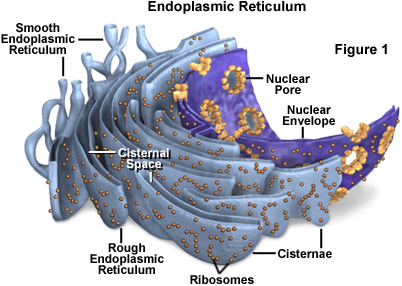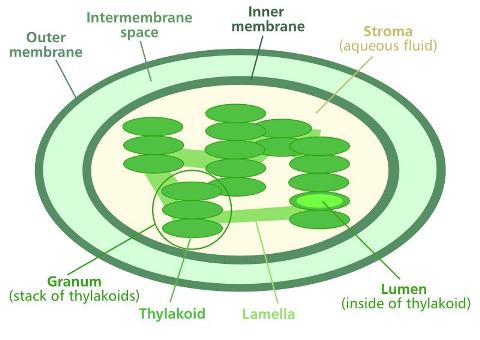- Compare and contrast the structure of Prokaryotic and Eukaryotic cells - be sure to include a discussion regarding the cellular organization of each.
There are several main differences between Prokaryotic and Eukaryotic cells. Overall, Eukaryotic cells will be more complex, larger, and found in animals, while prokaryotic cells will be simpler, smaller, and usually be unicellular organisms. However, they are rarely multicellular as well.
Similarities between the two types of cells are:
- both have a plasma membrane
- both contain cytosol and cytoplasm
- both contain DNA (so that they may divide)
- both contain ribosomes ( in order to create proteins) - However, ribosomes will be larger in Eukaryotic cells
- both have vacuoles
- both have a flagella
However, there are some major distinctions between the two, these being:
- Prokaryotic cells LACK a membrane bound nucleus. Instead, the DNA is spread out throughout the cell in the cytoplasm.
- Prokaryotic cells lack the following organelles:
- Nucelous
- Lysosomes
- Peroxisomes
- Microtubules
- Endoplasmic Reticulum
- Mitochondria (Prokaryotic cells actually have no membrane bound organelles)
- Golgi Apparatus
- Chloroplast (However, prokaryotic cells DO contain chlorophyll. It is instead scattered throughout the cytoplasm)
- Cells walls of prokaryotic cells will be much more complex than those of eukaryotic cells.
- Prokaryotic cells will only have one chromosome, while eukaryotic cells have several.
Sources:
- http://www.diffen.com/difference/Eukaryotic_Cell_vs_Prokaryotic_Cell
- http://www.shmoop.com/biology-cells/prokaryotic-cells.html
- Describe the basic structure and functions of key cell organelles (nucleus, Golgi, ER, mitochondria, chloroplast, vacuoles, plasma membrane). Include a diagram/drawing of each organelle!
- Nucleus
The nucleus plays a role in storing the genetic information for the cell and serves as the command center for the cell. The nucleus has double membranes and is continuous with the ER. It is constructed of chromatin (web-like and holds DNA) and also contains the nucleolus, which has no membrane. Here rRNA, used to create ribosomes, is made.
 |
| Source: www.ck12.org |
- Plasma Membrane
The plasma membrane is what surrounds the cell and encloses all of its contents. It is selectively permeable, meaning that only certain substances may go through. It is composed of phospholipids. These phospholipids have a polar phosphate head and non-polar lipid tails.
 |
| Source: www.buzzle.com |
- Endoplasmic Reticulum
It is composed of a phospholipid bilayer and helps the cell to carry around nutrients. There are two types:
- The Rough ER has ribosomes attached to it. It aids in the synthesis and packaging of proteins. The ribosome will build amino acid chains, which will eventually become proteins.
The Smooth ER is in charge of storing enzymes which help to create lipids. These enzymes also help to make certain substances not toxic to the body. Also stores ions.
 |
| Source: micro.magnet.fsu.edu |
Golgi Apparatus
The Golgi Apparatus is in charge of processing and packaging proteins so that they may be sent to wherever in the cell that they need to go. The golgi is made up of flattened membrane sacs called cisternae. In addition to being part of processing proteins, the golgi is also capable of creating macromolecules, including polysaccharides. The golgi’s cisternae are essential divided into two sides. The cis (meaning on the same side) is connected to the ER and transport vesicles will transport materials from the ER to the golgi. The other side is called the trans (meaning on the opposite side) and has vesicles that pinch off and travel to other sites. It is while products of the ER travel from the cis to trans side that they are modified.
 |
| Source: www.britannica.com |
- Chloroplasts
Chloroplasts are composed of interconnected sacs called thylakoids. Stacks of thylakoids are called granums. Chloroplast DNA, ribosomes, and enzymes are found in the fluid outside the thylakoids, known as stroma. Therefore the three spaces of chloroplasts are the thylakoid space, stroma space, and intermembrane space. Chloroplasts main job is to use the sun's energy during photosynthesis. By using the sun’s energy, chloroplasts are able to create glucose and oxygen from carbon dioxide and water.
 |
| Source: www.ducksters.com |
- Mitochondria
Mitochondria is surrounded by double membranes. The exterior membrane is smooth However, the inner membrane has infoldings called cristae, giving the inner membrane a larger surface area and increasing cellular respiration productivity. The organelle is divided into two spaces - the intermembrane space and the second is the mitochondrial matrix. This matrix contains the not only the mitochondrial DNA and ribosomes, but also enzymes necessary to catalyze steps of cellular respiration, the main function of mitochondria. During cellular respiration, mitochondria will convert glucose and oxygen into carbon dioxide and water, but also energy in the form of ATP. The enzyme necessary for ATP production is embedded into the inner membrane.
 |
| Source: blog.phoreveryoung.com |
- Vacuoles
Vacuoles help to give mainly plant cells structure. As plants are able to absorb more water, the water vacuole will grow large within the cell and causing pressures within the cell and giving plants their crisp look. When plants dry, the central vacuole does not have water, there is no pressure, and plants wilt. Other types of vacuoles can store a variety of things, including food, reserves of important compounds like proteins, pigments, and even poisonous compounds to protect plants against herbivores.
 |
Source: Crash Course Biology on Youtube
- Explain how several internal membrane-bound organelles and other structural features (e.g., ER, ribosomes) work together to provide a specific function for the cell (e.g., synthesis of protein for export) and contribute to efficiency (e.g., increasing surface area for reactions, localization of processes).
Proteins are essential to life. However, there is a process to produce and ship proteins. The process begins in the nucleus. Here, DNA is stored. This DNA is coding for the construction of proteins. THe nucleus will secret ribosomes, which will assemble the proteins by assembling amino acids into polypeptides. These ribosomes may either be floating in the cell or they may be attached to the rough ER. The rough ER is connected to the golgi apparatus, which will then process and package these proteins in vesicles, which have phospholipid walls. These vesicles will then travel to parts of the cell or outside of the cell.
- Explain the structure and function relationships between chloroplasts and mitochondria
Chloroplasts and mitochondria both work to help cells create the energy necessary for molecular functions. Chloroplasts are in charge of using the sun’s energy to convert carbon dioxide and water into glucose. Mitochondria then use this glucose to create energy in the form of ATP during the process known as cellular respiration. Chloroplasts are found only in plant cells. They contain thylakoids, which look like stacked poker chips. Both organelles have double membranes. The mitochondria's inner membrane has infoldings known as cristae. Within the inner membrane are is the mitochondrial matrix, which contains enzymes that will catalyze the steps of cellular respiration.
- Relate structural and functional evidence in chloroplasts and mitochondria to the endosymbiotic theory of their origins.
This theory suggests that originally the chloroplasts and mitochondria were cells of their own, living outside of the eukaryotic cell. This theory is supported by the fact that both organelles can create energy and the fact that they are autonomous. They divide on their own and each have their own DNA, separate from the DNA of the rest of the cell.The theory is also supported by the fact that both the chloroplasts and mitochondria have membranes of their own within the cell, suggesting that they were originally enveloped by the cell, and kept instead of digested when they served the purpose of providing the cell with energy.
- Represent graphically and explain the relationship between surface area to volume ratios as it relates to the efficiency of cellular work.
The surface area and volume of a cell are very important to its function. In order to work bests, cells will want to
have a large surface area to volume ratio. As a cell grows, the SA:V decreases since volume increases at a faster pace than SA. Having a large surface area is beneficial since there is more area for the cell to dispose of waste and take in nutrients. A smaller cell volume is desirable because that means that once inside the cell, nutrients will have to travel less distance to get to where the cell needs them to be.
 |
| Source: www.tiem.utk.edu |
No comments:
Post a Comment